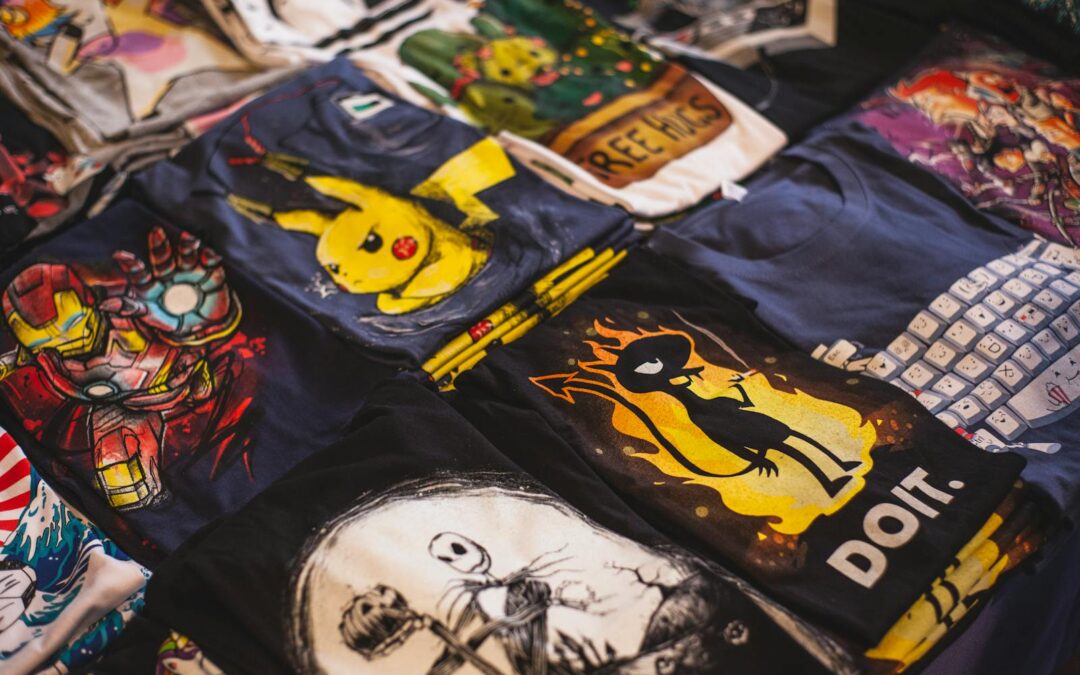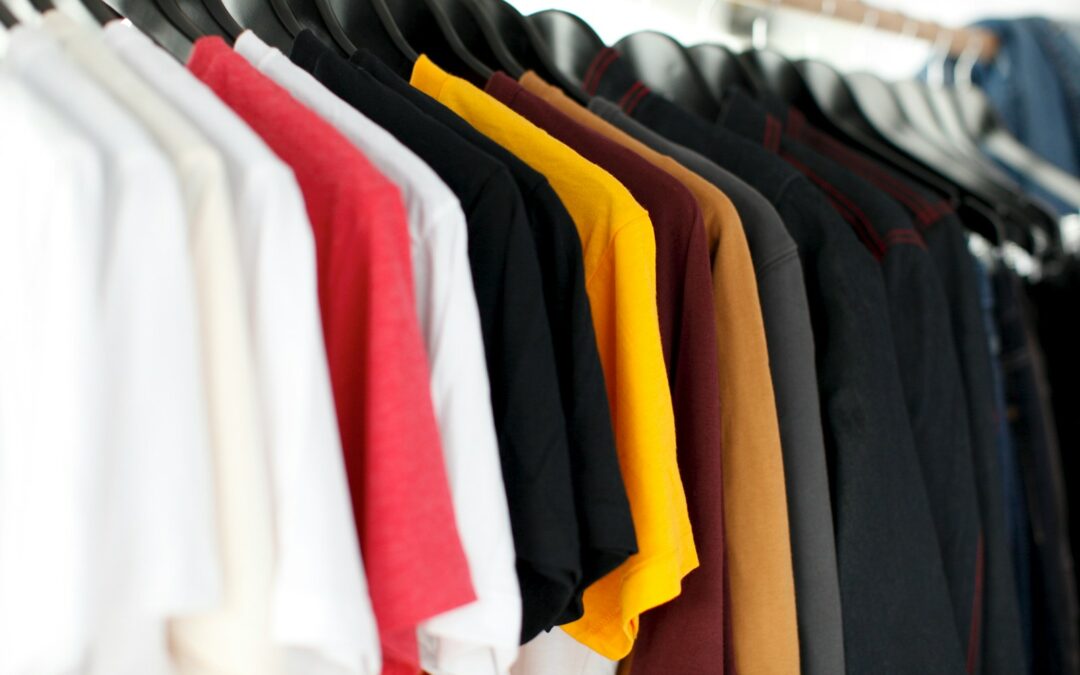Screen printing is a popular printing technique that can be used for a variety of purposes. In order to get the best results from your screen printing project, it’s important to understand how to screen print properly. In this article, we will cover the basics of screen printing, including the supplies you need and the steps involved in the process. By following this guide, you can produce beautiful, high-quality prints using this versatile printing technique.
What Is Screen Printing?

Screen printing is a printing technique that uses a mesh screen to transfer ink onto a substrate. The mesh screen acts as a stencil, allowing ink to pass through the permeable areas in the screen and be deposited onto the substrate below.
The impermeable areas are created using photo emulsion. The photographic emulsion technique involves a photosensitive substance reacting with very bright light and becoming insoluble.
This screen is made of a fine, sheer fabric. Nylon, polyester, or silk have been used in the past, but recent advancements have seen the addition of metallic fibers for screen printing fabric mesh.
There are various types of mesh sizes that determine the outcome and look of the finished design on the material. The fabric count is such that it is possible for the print paste to pass through the interstices between the yarns.

Screen printing is a centuries-old technique. It’s been said that the earliest form of screen printing can be found in prehistoric cave paintings. The origins of the first actual screen prints are unknown. Most historians believe they originated in China during the Song Dynasty (960AD) when great artistic progress was being made. They applied intricate designs to cloth using finely woven mesh and block stencils.
The methods of screen printing were subsequently adopted by other Asian countries. In Japan, at first, artists wove the mesh from human hair and then applied paint using brushes with stiff bristles. Later on, however, silk mesh became the preferred fabric to use for this method; as a result, it was named “silk screen printing.”
The silkscreen printing method did not appear in Western Europe until the 18th century. After traveling along the Silk Road, European merchants brought the process and materials back with them.
In France, artists began to utilize silk screens stretched over a frame to print on fabric. During the industrial revolution, screen printing became more popular. Factories used screen printing to create wallpaper and textiles in huge quantities.
Samuel Simon, an Englishman, patented the first “modern” screen printing technique in 1907. His method used a stencil drawn on bolting cloth that was then stretched over a wooden frame.
In the 1960s, screen printing was a popular technique in the Pop Art movement. Andy Warhol and other prominent artists utilized it to create bright, repeating designs. The Marilyn Monroe and Campbell’s Soup prints are among his most famous creations.
Today, this printing technique is still widely used by artists, businesses, and factories. It’s an efficient way to produce high-quality prints in large quantities. Screen printing can be done by hand or using a machine.
Materials Needed For Screen Printing

Below, we will list the materials you need for screen printing. You may already have some of these items around your home or office. Others can be easily sourced from a local craft store or online retailers.
Mesh
Mesh is the fabric woven tightly across the screen printing frame. In ancient times, it was made from silk. Nowadays, the screen material is more frequently made of polyester.
Mesh count in fabric indicates how many strands per inch are woven into it. If there is a lower mesh count, that means there are fewer strands and wider spaces between them.
There are two main types of mesh; textile mesh and paper mesh. The textile mesh contains a lower mesh count and allows more ink to come through. It is, therefore, ideal for use on thicker materials. Paper mesh, on the other hand, has a higher mesh count. This means that it’s better for printing finer details onto paper or cardstock.
Screen Printing Frame

If you’re looking for a screen printing frame, we recommend choosing an aluminum frame since it dries much faster after cleaning than a wooden one and so may be cleaned and used again sooner. They are slightly more expensive than wooden screens, but wood can warp; therefore, aluminum is a better investment.
You can also make your own screen printing frame, but we recommend only attempting this if you are experienced in woodworking. If not, it’s best to leave it to the professionals.
Choose a frame that is as big as your space allows. For each design, you don’t need to use the whole size of your screen, but this does allow you greater printing options if required.
Screen Printing Inks
There are two main types of inks used in screen printing; water-based and plastisol.
The recommended type of screen printing ink for beginners or those who will be using it at home is water-based, as it is more environmentally friendly. You can pick some up from your local Hobby Craft store.
Another suggestion would be to start with system three screen printing inks. Just note that you’ll most likely have to mix these water-based inks with a printing medium and some water so the ink doesn’t dry in the mesh and also adjust how concentrated you want the color to be.
Plasitols inks, on the other hand, are much more durable. They are often used for industrial screen printing as they can withstand high temperatures, making them ideal for printing onto mugs or fabric. Plastisol inks are also very vibrant and come in a wide range of colors.
Squeegee

The squeegee is one of the most important tools in screen printing. It’s a firm rubber blade that is used to push ink through the mesh and onto the surface below. The size of the squeegee will depend on the size of your screen printing frame.
A standard squeegee is about 14 inches (35 cm) long and 2.5 inches (6 cm) wide. If you’re using a large screen, you may need a longer or wider squeegee.
Screen Printing Press
Though you can screen print without a press by using only a mesh screen and squeegee, most printers find it faster to use a press. The press steadies the screen in-between prints, allowing for easy exchange of the paper or clothing being printed.
Screen Printing Emulsion
If you want to produce high-quality prints, you will need to use a screen printing emulsion. This is a light-sensitive paint or liquid that is brushed or sprayed onto the screen. Once dry, it forms a hard coating that blocks the areas of the mesh you don’t want the ink to pass through.
You can buy pre-coated screens, but these are more expensive than ones that you coat yourself. If you’re just starting out, we recommend using an emulsion kit and coating your own screens. It’s a simple process and only takes around 30 minutes per screen.
Screen Printing Tape

Tape is used to hold the stencil in place on the screen while you’re applying the emulsion. You can use any type of tape, but we recommend using low-tack tapes such as masking tape. This will prevent the stencil from sticking to the screen and making it difficult to remove.
Once you’ve applied the emulsion and allowed it to dry, you can secure your stencil to the screen with tape. Place the stencil on top of the mesh and use a pencil to trace around it. Then, cut out the design with a sharp knife or blade.
Light Source
You will need a light source to expose the emulsion-coated screen. The light source needs to be bright enough to penetrate the stencil and expose the areas of the screen that you want to print with ink.
Sunlight is the most common type of light used for exposure, but it can be unpredictable and isn’t always reliable, especially in the winter months.
You can buy a UV exposure unit that is specifically designed for screen printing. These are relatively inexpensive and give you much more control over the exposure process.
How To Screen Print

Below, we share a step-by-step guide on how to screen print at home. If you’re new to the process, we recommend reading through the entire guide before getting started.
1. Create Your Design
This is where the fun begins! You can use any type of design for screen printing, but we recommend starting with a simple design that isn’t too detailed. Once you’ve mastered the basics, you can experiment with more complex designs.
There are two main ways to create your design. The first is to draw or paint it directly onto the screen using water-based block-out ink. This is a quick and easy method, but it does have its limitations.
The second way is to create a stencil which will be used to block out the areas of the screen that you don’t want ink to pass through. Stencils can be made from paper, cardboard, or vinyl.
2. Prepare Your Screen

Once you’ve created your design; it’s time to prepare your screen for printing. The first step is to clean the screen. This will remove any dirt or debris that could prevent the emulsion from adhering to the mesh.
Next, you need to apply the screen printing emulsion. This is a light-sensitive liquid that hardens when exposed to light. You can buy pre-coated screens, but these are more expensive than ones that you coat yourself.
To coat your own screen, start by pouring some of the emulsion into a tray. Then, use a brush or squeegee to evenly spread the emulsion over the surface of the screen. Make sure you don’t miss any areas and that the coating is nice and even.
Once the entire screen is coated, leave it to dry in a dark room or cupboard for around 24 hours. This will allow the emulsion to harden and become light-sensitive.
3. The Emulsion Is Washed Off
The screen will become solid after a certain length of time has passed while the design is exposed. Any unhardened emulsion is then thoroughly washed away. This leaves a transparent imprint of the design on the screen for the ink to pass through.
After the screen is dried, look over it to make touch-ups or corrections that might be needed to ensure as accurate an imprint to the original design. The stencil is now ready for use.
4. Prepare The Item
The item that will receive the screen print is placed on top of a piece of paper or another flat surface. This protects the work area from ink spills and also catches any excess ink that might seep through the screen.
5. Ink Is Added To The Screen
Screen printing inks come in a variety of colors, but you can also mix them to create your own custom colors. Start by adding a small amount of ink to the center of the screen. Then, use a squeegee to spread the ink evenly over the surface of the screen.
Be sure to apply enough pressure to force the ink through the stencil and onto the item below. You may need to reload the screen with more ink several times during the printing process.
6. The Item Is Removed
Once you’ve finished printing, carefully peel the item off of the surface, it was on. If any ink has seeped through to the underside of the item, you can remove it with a damp cloth.
7. The Screen Is Cleaned
After you’re done printing, it’s important to clean your screen as soon as possible. Use warm water and mild soap to remove any ink or emulsion that’s still on the surface. Then, rinse the screen with clean water and allow it to air dry.
8. Your Print Is Complete!
You did it! Your screen print is now complete. All that’s left to do is admire your handiwork.
Conclusion
Screen printing is a great way to add your own personal touch to t-shirts, posters, and other items. With a little practice, you’ll be able to create professional-looking screen-printed items that are sure to impress.




